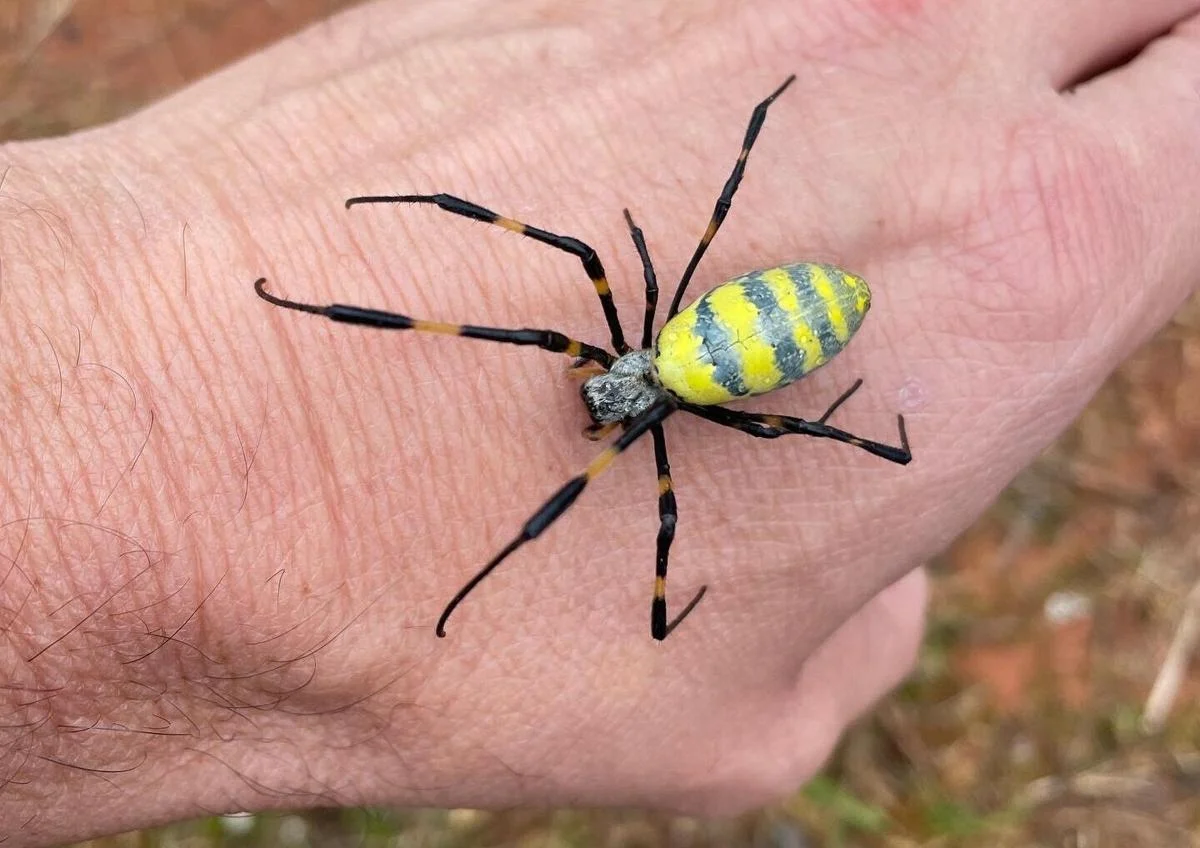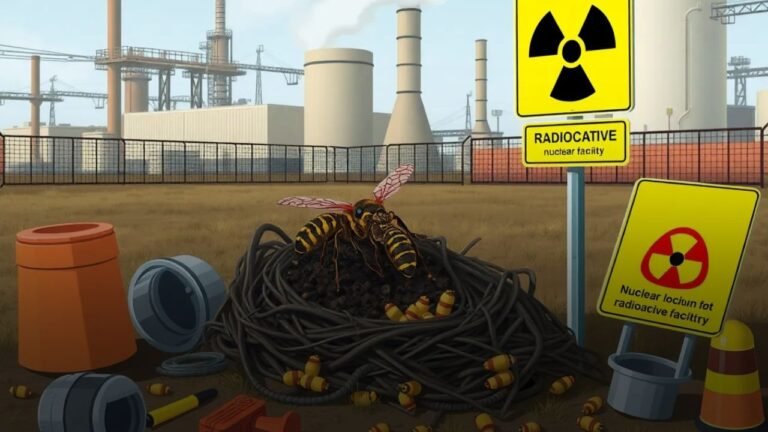‘A Big Yellow Spider!’: Sightings of Invasive Joro Spiders on the Rise in South Carolina
GREENVILLE, SOUTH CAROLINA — South Carolina residents are reporting a rise in sightings of large, bright yellow spiders this fall — the invasive Joro spider, a species that experts say is spreading across the state as cooler weather sets in.
According to FOX Carolina News, researchers and pest control professionals have noted a surge in sightings of the palm-sized arachnids, known for their vivid color and massive golden webs.
‘Spider Season’ Brings a Surge of Joro Sightings
“It’s fall, and fall is what I call spider season,” said Dr. David Coyle, Associate Professor with Clemson University’s Department of Forestry and Environmental Conservation. Coyle explained that the Joro spider’s population tends to peak this time of year as females mature and grow to their full size.
“They’re a big yellow spider!” said Austin Hamilton, General Manager of Apex Termite and Pest Control. “The females are getting really beefy this time of year. They can be an inch to an inch and a half long, and their legs can stretch three or even four inches.”
The Joro spider, native to East Asia, is believed to have arrived in the United States by hitching a ride on international cargo shipments. First spotted in Georgia several years ago, the species has since expanded throughout the Southeast, including both Carolinas.
Bigger, Brighter — But Not Dangerous
Despite their intimidating appearance, experts stress that Joro spiders are not harmful to humans. Dr. Coyle and his team at Clemson University conducted a study involving 22 volunteers who agreed to be bitten by Joro spiders to monitor the effects.
“What we found was that for most people, these bites are comparable to a mosquito bite or a mild bee sting,” Coyle said. “So not bad at all.”
While the bites themselves are mild, scientists are paying close attention to the ecological effects of the Joro’s spread. In areas with heavy Joro populations, researchers have noticed a decline in native spider species, suggesting that the newcomers may be outcompeting local arachnids for food and habitat.
Controlling the Joro Spider Is No Easy Task
Pest control experts say removing Joro spiders can be a challenge, especially without the proper tools or treatments.
“They’re tough to control if you’re not doing it professionally,” Hamilton explained. “You have to use products that are specifically designed for spiders — sprays alone won’t always work. It’s also important to sweep down webs completely to prevent them from rebuilding.”
Although they can be unsettling to see, Joro spiders also play a role in controlling insect populations — feeding on mosquitoes, flies, and other pests.
Clemson Continues Studying the Species’ Impact
Clemson University researchers are continuing their work to understand how the Joro spider interacts with the local ecosystem and what long-term effects its spread might have in the Southeast.
Residents who encounter the spiders are encouraged not to panic and to avoid using harsh chemicals unnecessarily. Experts advise gently removing webs if they appear near homes and contacting pest professionals only if infestations persist.
For those who spot the golden webs this season, Dr. Coyle offers reassurance: “They look scary, but they’re mostly harmless — just a fascinating new addition to our fall wildlife.”
Have you seen Joro spiders in your area? Share your photos or experiences with us at SaludaStandard-Sentinel.com.






